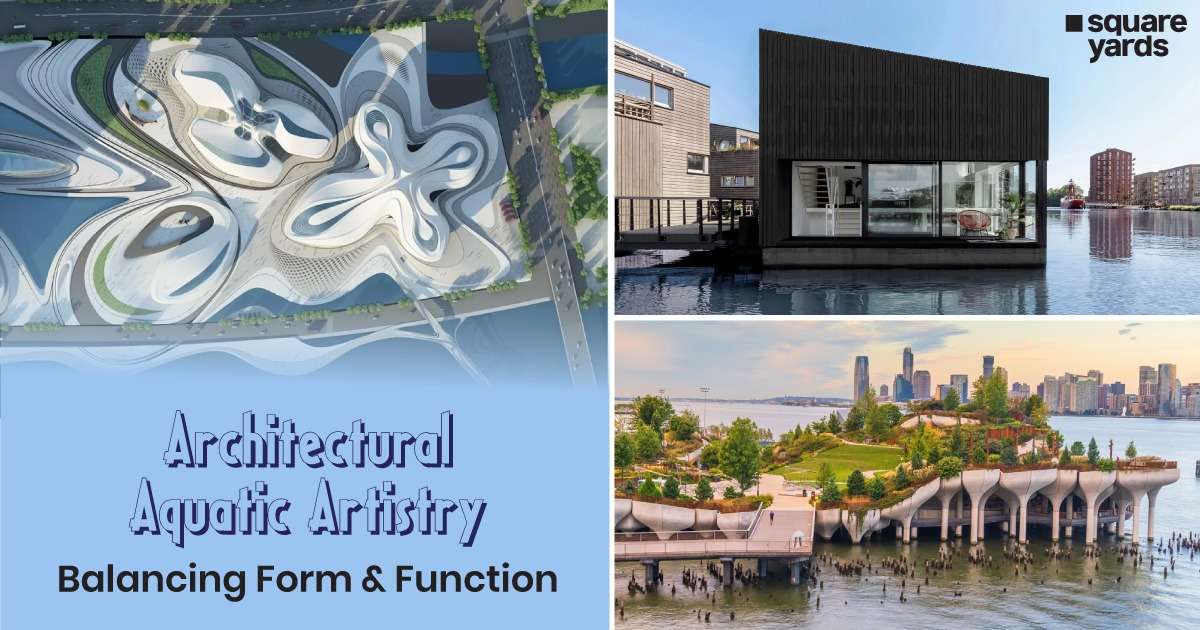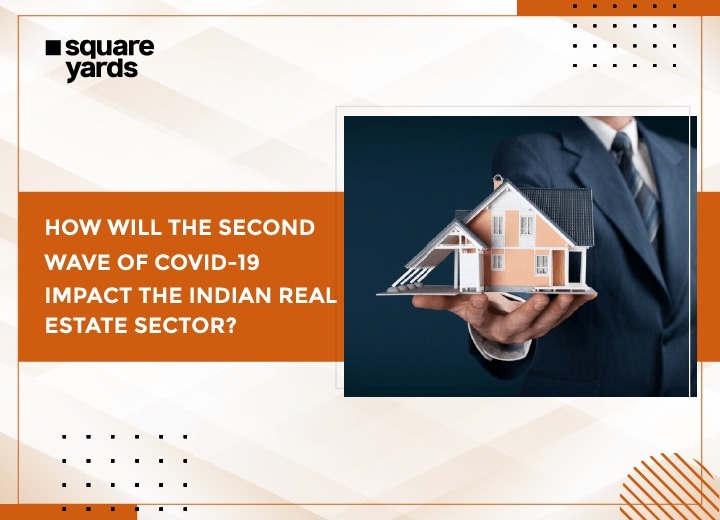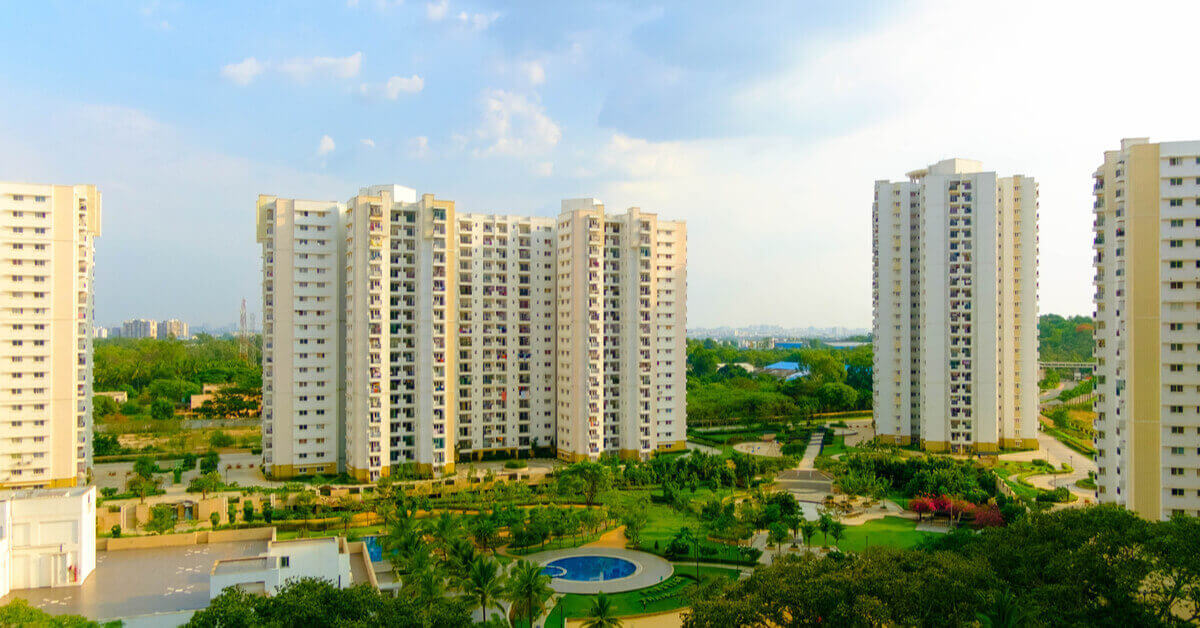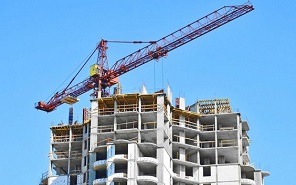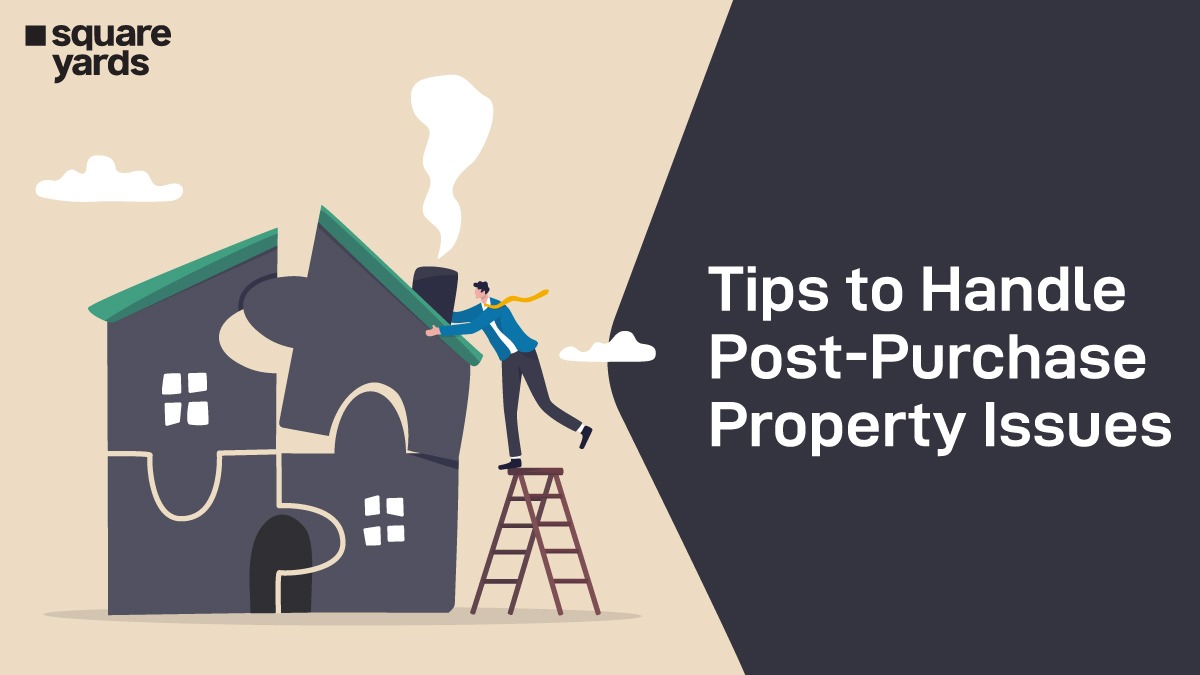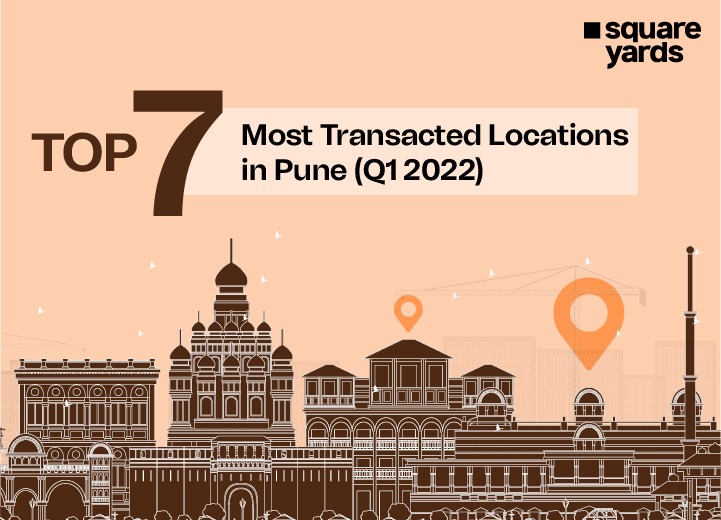Nothing in this world effortlessly flows and dances like the ethereal element, WATER, which embodies lightness and buoyancy, while ARCHITECTURE stands firmly rooted in our realm, enduring its stability and permanence.
Water carries a calmness with its sparkling surface and the gentle caress of its touch. Indeed, water has an unparalleled connection with our existence, but we discover ourselves chasing it for other purposes (agriculture, trade and transport). In short, we Homo Sapiens need to live near the Water.
The roots are prevalent in ancient civilisations, from copious fountains to aqueducts and novel waterfalls. Architectural designs now manifest vivid effects, generating liveliness in harmony with nature, designing buildings along coastlines and waterfronts and incorporating their hydraulic nature to anchor public spaces and enhance the narrative of a place.
Today, we will illuminate the transformative journey and uncover the timeless synergy between man, land and water.
Chapter 1- Tracing The Roots of Ancient Civilizations
From hunter-gatherers to land farmers, we transitioned with water being our steadfast companion, a key part of our lives and cultures. All major civilisations established and settled along river banks, sometimes united and, at times, diverted. The oldest settlement, or by far the oldest city on the planet, is Jericho, near the Jordan River with astonishing natural springs. The strategic location and the bountiful water resources made the city an attractive and sustained place for foragers thousands of years ago.
Water components can be typologically categorised, and their fundamental use is treated according to their character. Think Roman baths and aqueducts, imposing an imperial status.
In Mesopotamia, stone water channels demonstrate the artistry of engineering. In contrast, the ancient city of Mohenjadaro exhibits architectural composition and spatial articulation of diverse environments with its well-planned water reservoirs and aquifers.
We can feel the supremacy of water as a cultural, social, and recreational symbol of life.
Roman Aqueducts as watercourses channel water from fresh resources to the city.
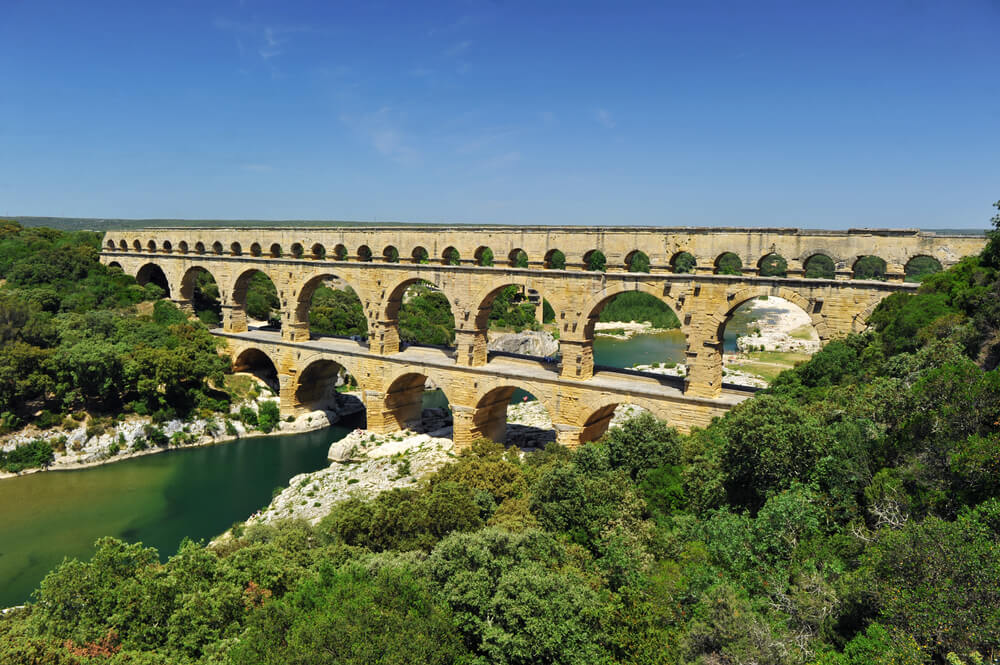
The Great Baths in Mohenjadaro, Indus Valley Civilization
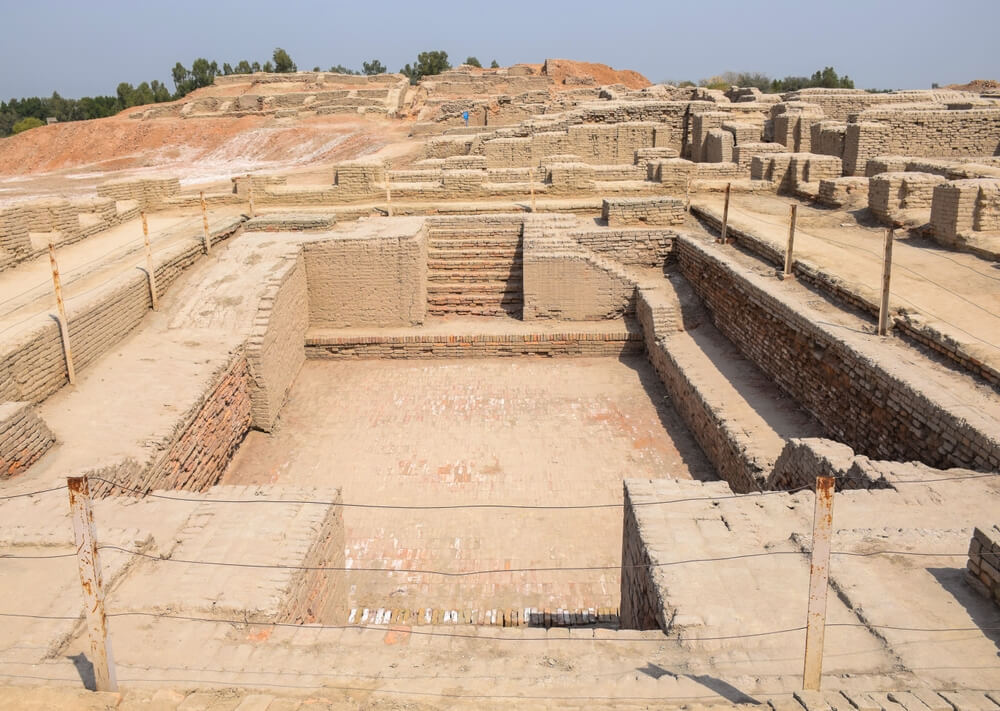
Chapter 2- Cultural and Traditional Aspect of Water Architecture
Water significance is closely associated with diverse cultures and religions, becoming a source of rich symbolism. The spiritual and divine connection of water is based on the predominant religious views of the region. Indian architecture is replete with aqua-structures- lakes, ghats, kunds, and stepwells. Varanasi’s iconic ghats are the epitome of traditions and encompass the core values of the Hindu religion.
There is more to the aesthetic qualities of water that can alter the microclimate of an area, creating a tranquil condition in hot and dry arid regions. Stepwells, built as ecosystems, were integral to the Indian Communities, providing socialising spaces and serving as climate mitigation elements. These richly carved and ornate structures showcase the architectural prowess of that era.
The stepped ghats of Varanasi form a meaningful relationship between water and architecture.
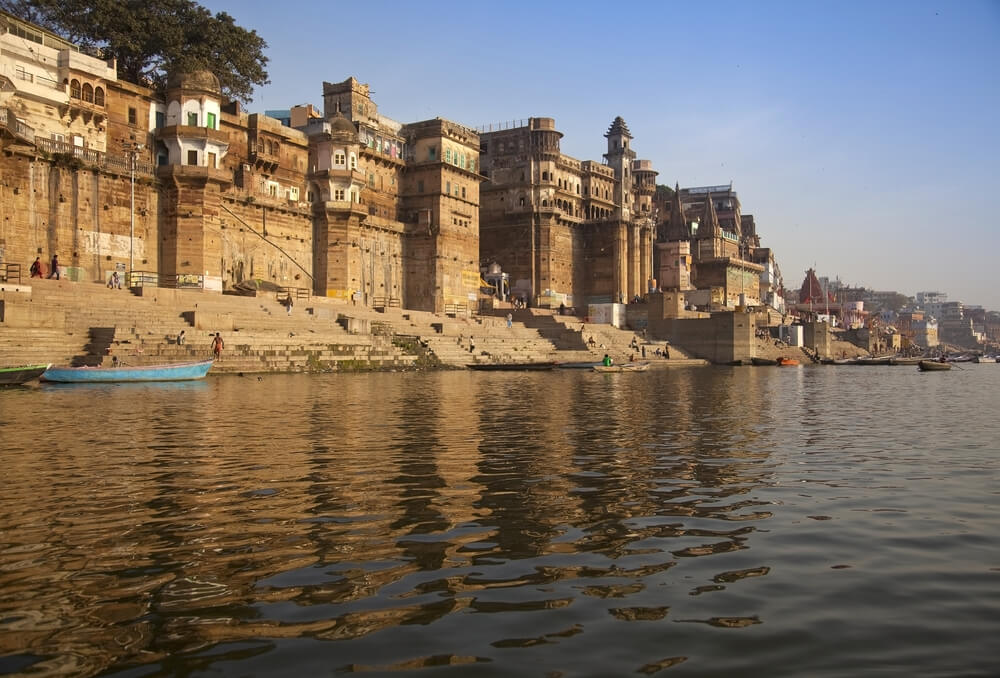
Rani ki Vav in Patan, Gujarat
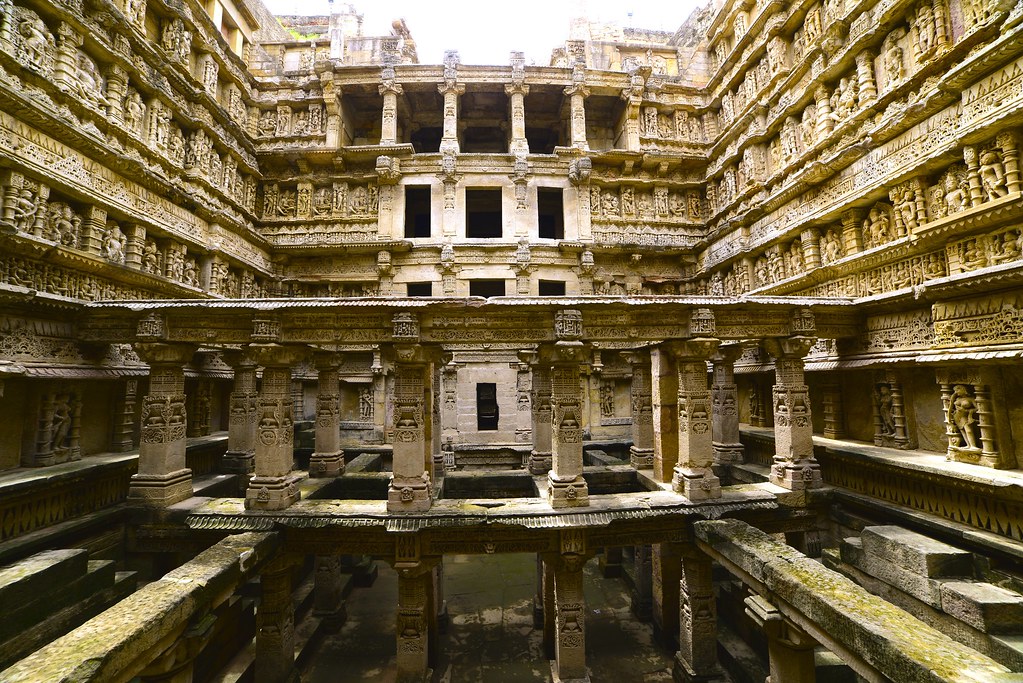
Source – flickr
Chapter 3- Evolution of Water Architecture- Where Opposites Meet
With the advent of modern architecture during the 20th century, water became the desirable design element incorporated into multi-faceted ways, creating a sensational synergy between solidity and fluidity. It’s how water acts and reacts with our senses and influences the overall ambience and human experience within a space. There are numerous examples of water-enlightening design.
Fallingwater, designed by the legendary architect Frank Lloyd Wright, embraces humanity and natural connection without disrupting the ecosystem. Breaking the traditional norms where water converged in forms like dams, pools, and fountains. Today, water is the defining feature inspiring the realm of architectural design, yielding seamless and organic forms.
Perched directly above a waterfall, the house redefines the concept of “living life on the edge.”
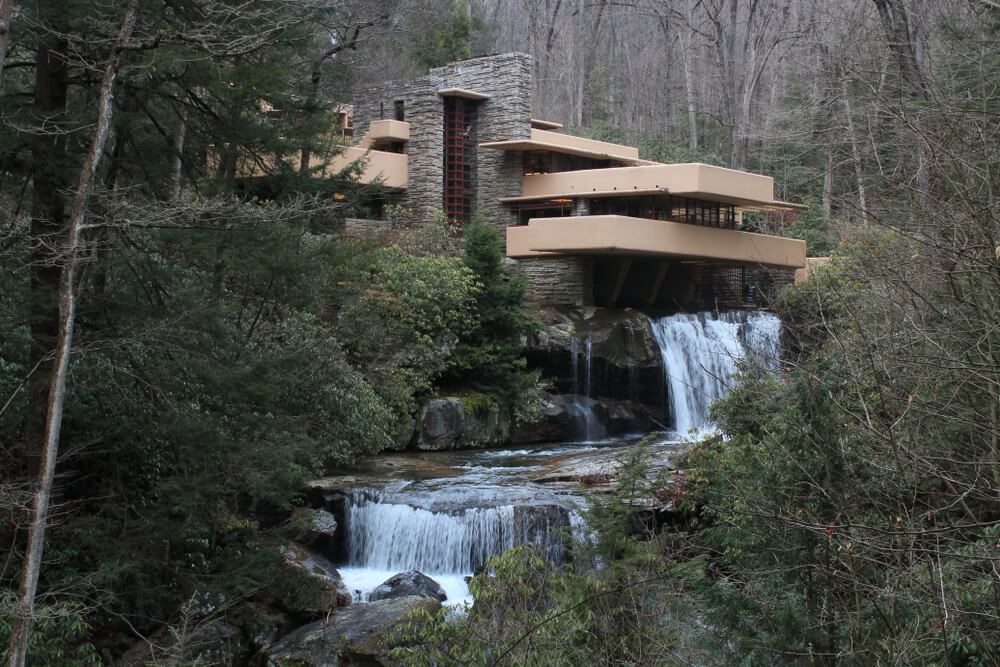
Blue Planet Aquarium, Copenhagen, Denmark
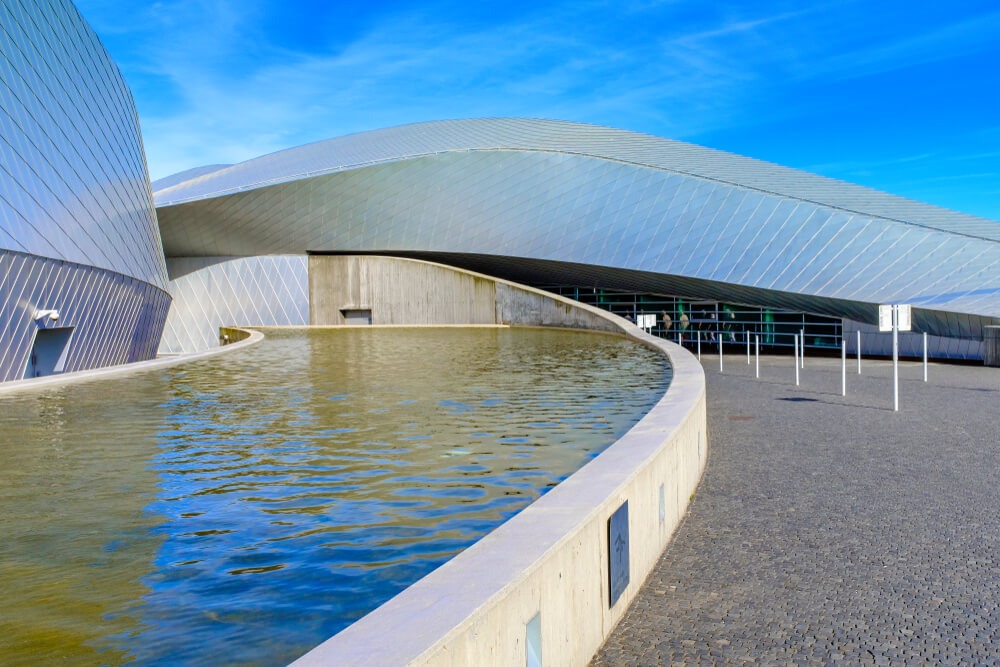
Chapter 4- Unifying Water and Architecture
The nature of water in architecture orchestrates a unique harmony, offering additional spatial understandings to make the most of its motion, transparency, reflectivity, plasticity, sound, and colour. Architects have skillfully blurred the line between form and fluidity seamlessly intertwined with the surrounding environment. The recent decade has seen an emergence in urban regeneration, waterfront renewal designs and reflecting pool plazas infusing more enthusiasm and openness in the spaces.
A fascinating water revitalisation project in Bordeaux, France, is the Miroir d’Eau or Water Mirror. Situated across from Place de la Bourse, it is the largest reflecting pool, covering 3,450 square metres that stretches as far as the eye can see. This aquatic marvel breaks the monotony of restoration projects, creating a visual symphony where the water shimmers and glows.
In yet another instance, in New York City, The Little Island Park or Floating Garden is a beautiful juxtaposition to the flat streets of Manhattan. The team behind the project needed to create a new topography and recreational hub for the city, and this project is a fruit of that labour. But the major takeaway is-
The excitement of being over the water, the innate experience for users, being immersed in greenery, and leaving behind the chaos of the city is beautifully sculpted!
Water Mirror, in Bordeaux, France
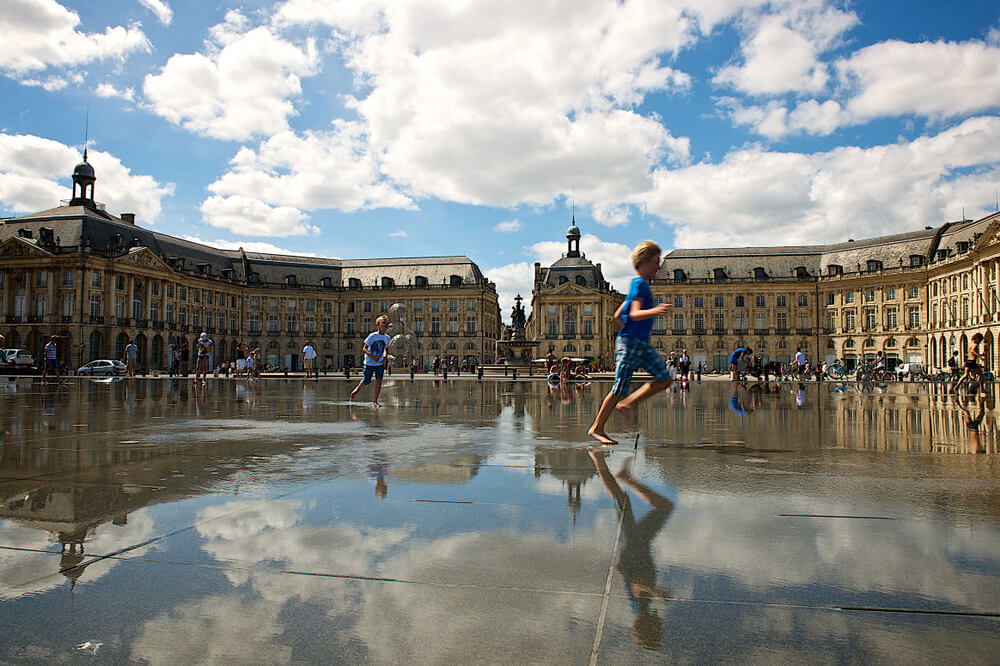
Little Island Park- A Whimsical Wonderland on Hudson River, New York
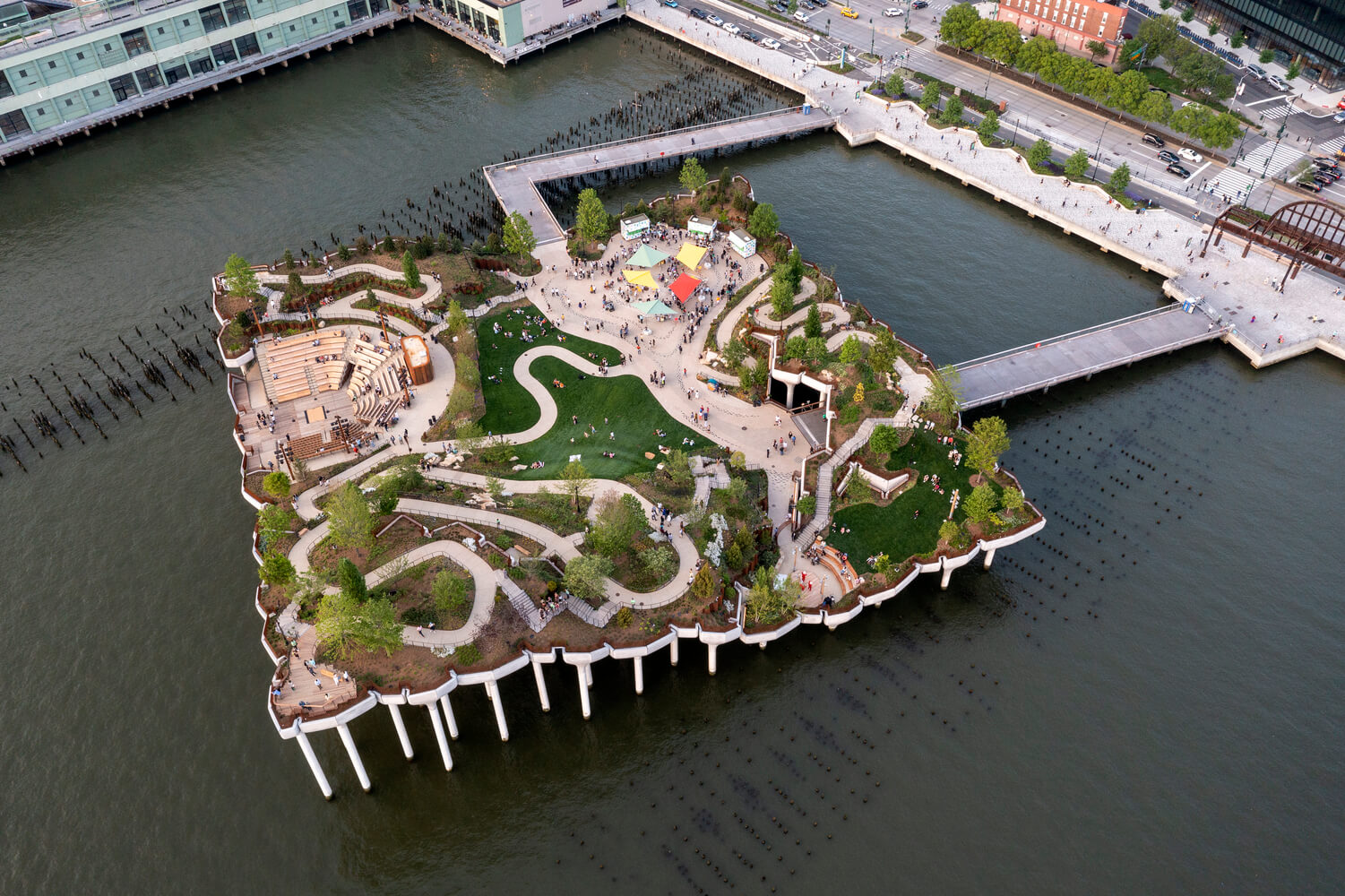
Source@ archdaily.com
Chapter 5- Awakening The Senses – Sight and Sound
The five senses are linked together
For all five have grown from the same root,
When one is strengthened, the rest are enhanced.
Rumi’s
Space is much more than what meets the eye. Textures, scent, light, and sounds can impact the visitor’s experience, triggering feelings such as warmth, comfort and excitement. Water epitomises purity and wholesomeness and can fathom light. Reflecting pools, fountains, and waves become prisms in which light is refracted and fragmented into an endless loop of luminous sparkles. A body of water often takes on its unique hue as it mirrors the surrounding environment. How we perceive these colours is a dance of angles and shades, captivating and inspiring us.
Similarly, to think about sound in architecture- water, with its highs and lows, rhythms and tunes, evokes different melodies that can lend a breadth of emotions. Can you feel the beat?
Dancing Fountain Show, Dubai Marina.
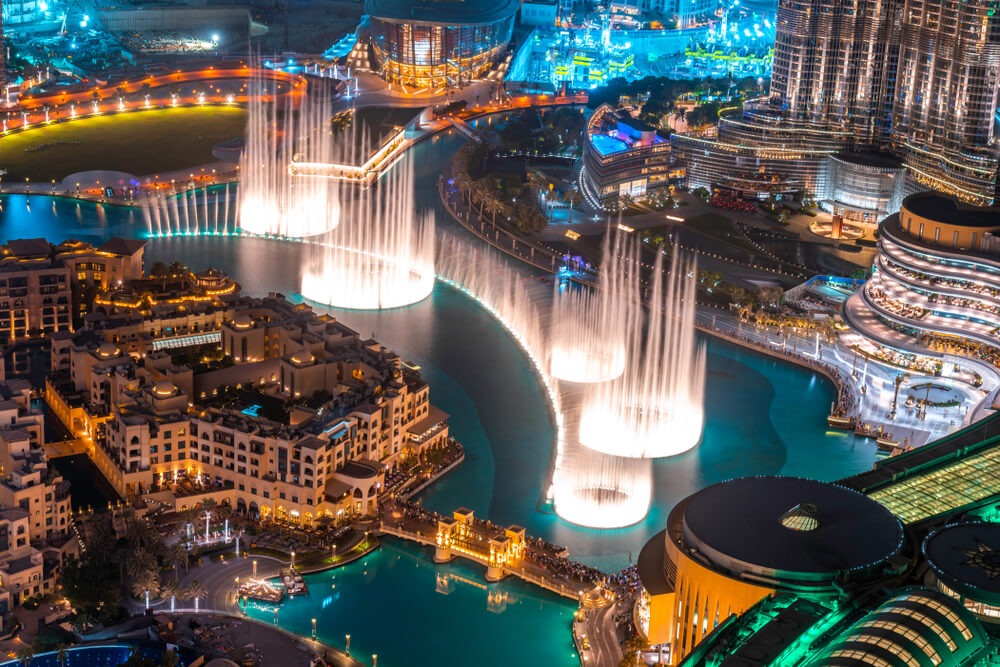
A celebration of multi-sensory experience- Apple Piazza Liberty, Milan.
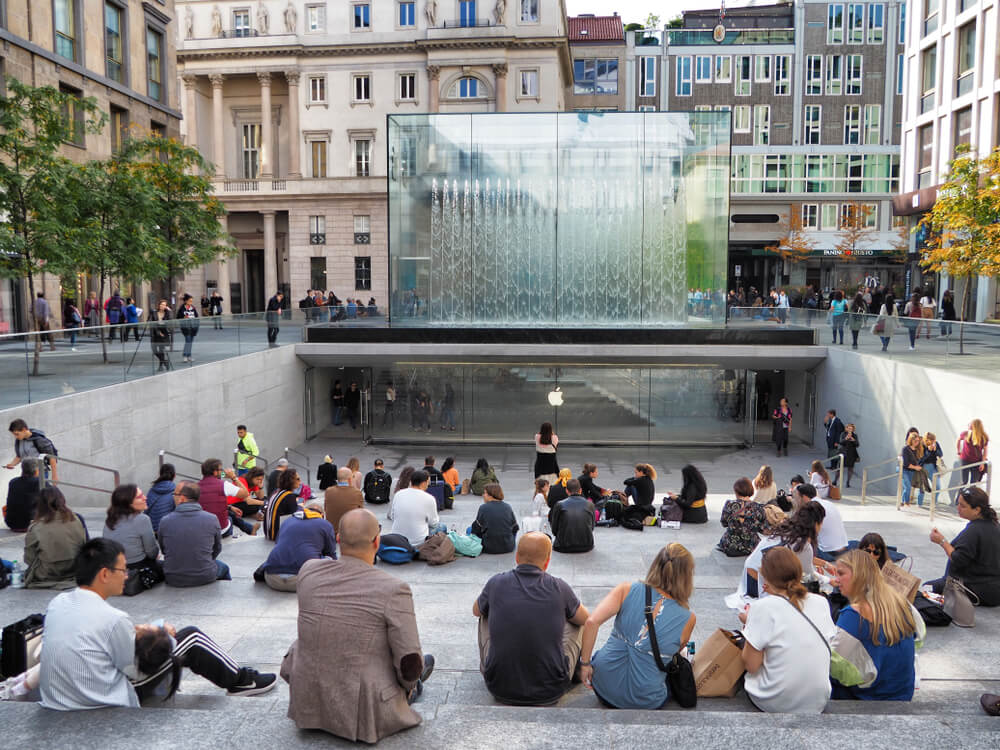
Chapter 6- Water – In Between Spaces Threading Together
Water can serve as a nucleus within a space. The correlation between the built environment and this hydraulic element is unique, dynamic and therapeutic, breathing life into the setting. With no exterior or interior walls, featuring only a roof, Garden Hotpot Restaurant is supported by thin columns deeply integrated into the environment. Hidden around the eucalyptus trees and surrounding a lotus pond, the structure blurs the boundaries between nature and design.
Another example of these spaces is Singapore’s Jewel Changi Airport, led by Safdie Architects firm, with a dome-shaped structure fabricated with high-performance glass panels, offering retail, recreational and leisure facilities- all under one roof. Leaving visitors spellbound in admiration.
But Admire what?
A tropical garden that houses a magnificent indoor waterfall, surrounded by smaller cascading waterfalls and five paradise gardens.
River Vortex at Jewel Changi Airport is a sight to behold!
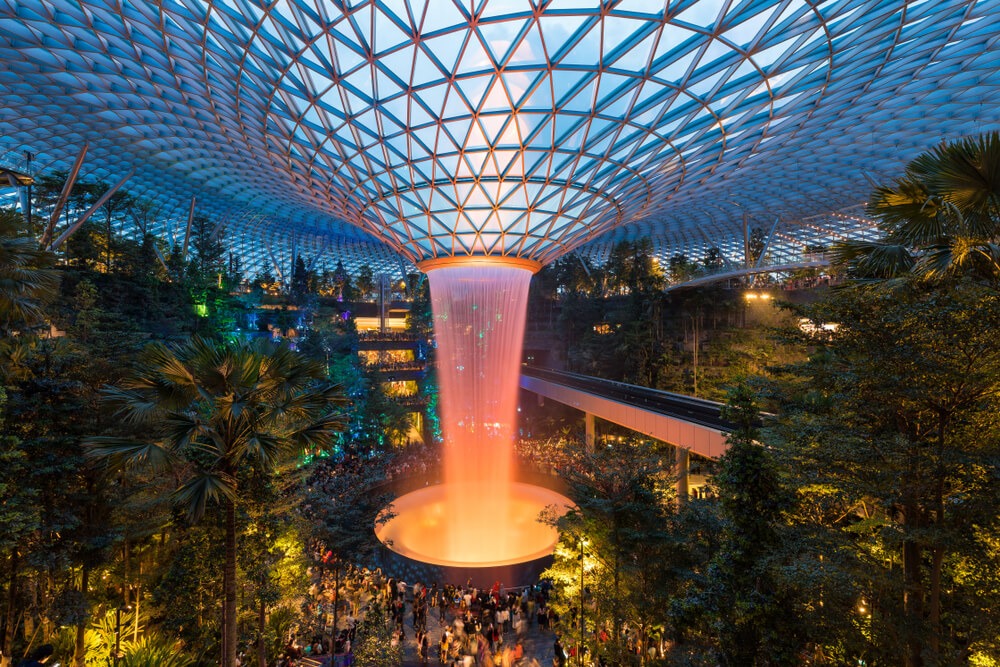
Amidst the rustling leaves and the soft babble of the brook, one can find a rare moment of ataraxy- Garden Hotpot Restaurant in Chengdu, China.
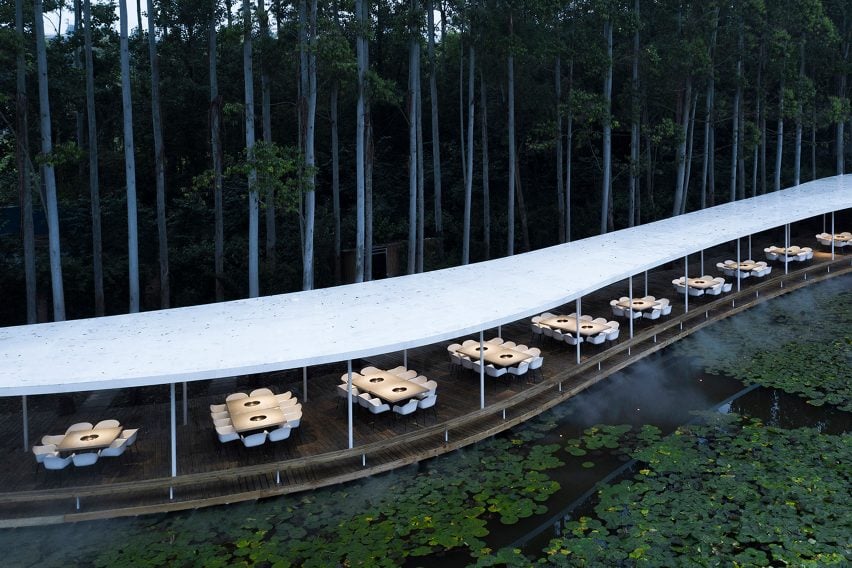
Credits – Dezeen
Chapter 7- Fluid Transitions- Need of The Time
Progressing the future with Metaverse and AI, architectural designs are rippling with metamorphosis, driving the conventional boundaries of what’s possible when water and architecture waltz together. The concept of fluidity seizes flowing spaces, curvaceous compositions, and even a zoomorphic shape that speaks a unique architectural language, emphasising that technology and creativity know no bounds.
The Rolex Learning Center is one of the prominent examples that have embraced architectural fluidity. La Maison des Fondateurs by Bjarke Ingels, in Le Brassus, Switzerland, has been applauded for its spiralling form. The notion of fluidity is in vogue as one of the defining characteristics of the architectural field in the early twenty-first century.
Rolex Learning Centre in Switzerland
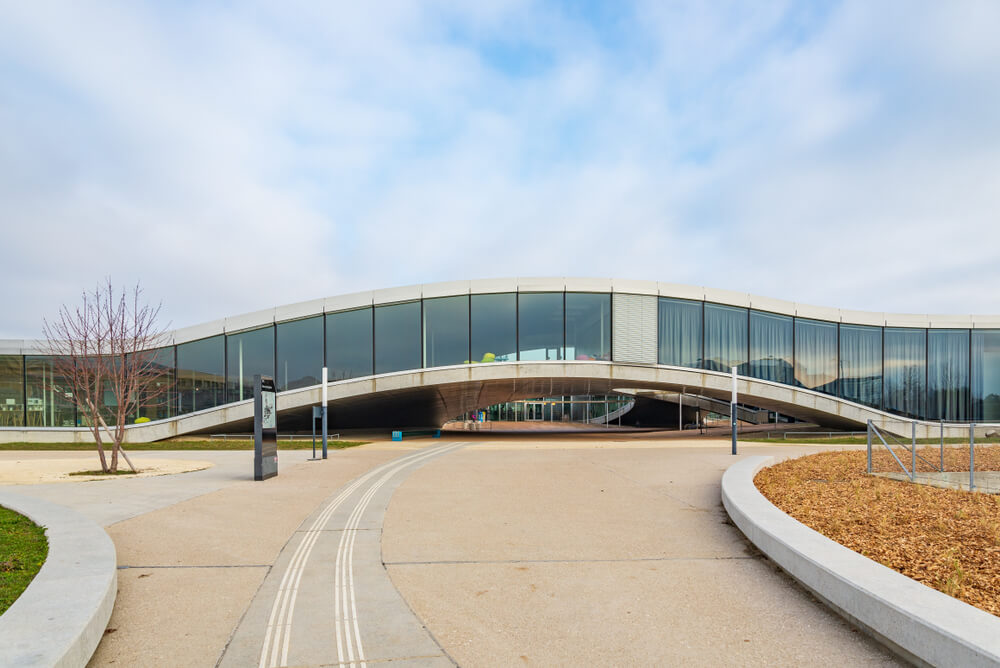
Epilogue- Sailing To The Future
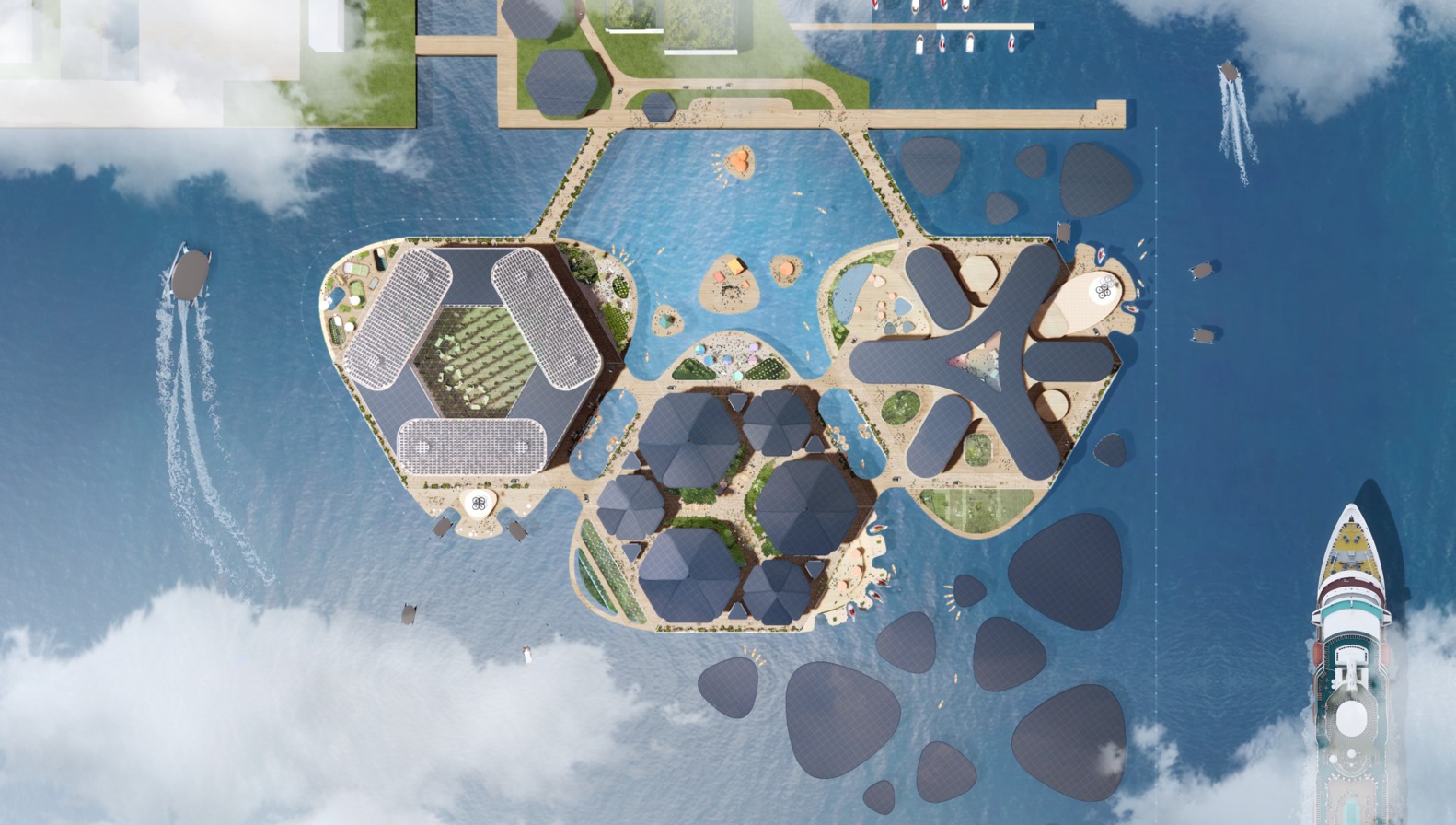
The Oceanix City (Image Source – adsttc)
As we stand at the juncture of water and architecture, we witness that the affinity of these elements has expanded brilliantly over time in imaginative ways. Today, architects are observing pioneering sustainable choices and driving innovative solutions, especially concerning climate change. The answer is floating structures and aquatic cities. One of the most visionary designs is by Bjarke Ingles- The Oceanix City. Designed to adapt to the shifting needs of the city of Busan, the project promises innovative mobility, net-zero energy and coastal habitat regeneration.
One thing is for sure: this radical shift will entirely change the future of how we live and experience life. So, do you see yourself in a future living on water?


